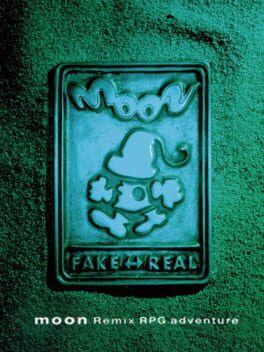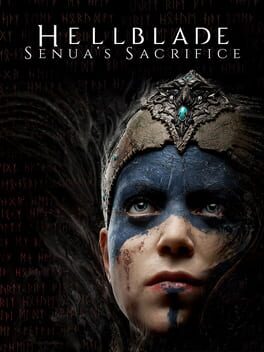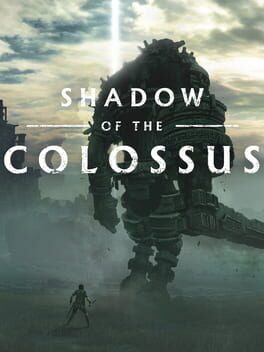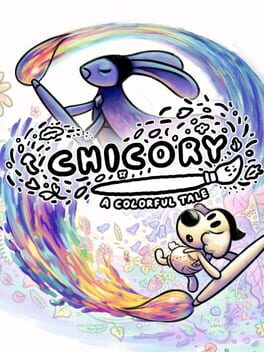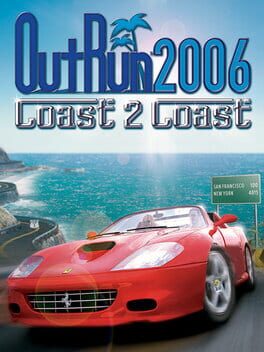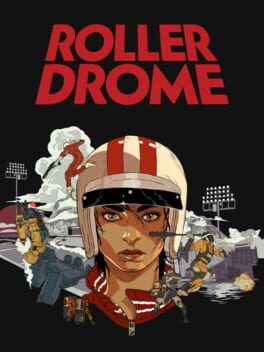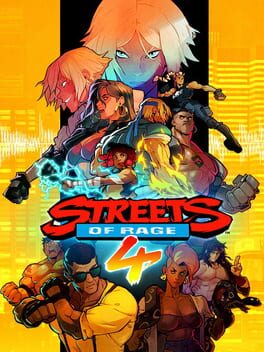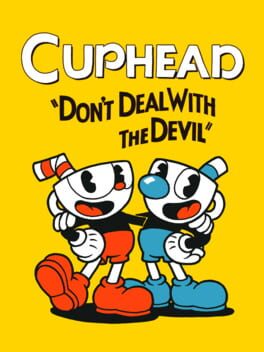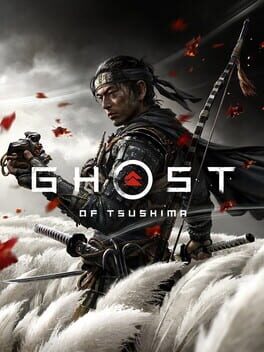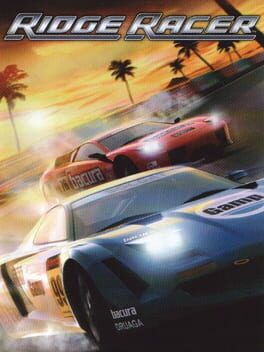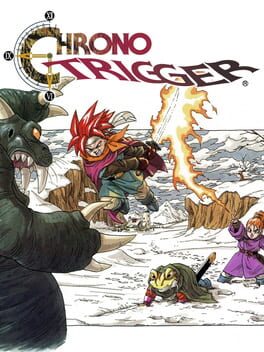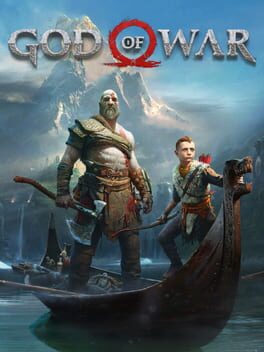Sakoda
2007
Halo 3 knows what it means to be cinematic. If something blows up or there is a landscape-altering event, you are in it driving/flying/running and always in control of Master Chief. When there is a scene that is not as glamourous and mostly dialogue, only then will the cutscenes take over and elevate the conversation with striking cinematography straight out of a $100000000000000000 blockbuster. Halo 3's atmosphere is heroic. The emphasis placed on sweeping acapella vocals and long strings empower the Chief such that both he and the world feel equally threatening. It balances a borderline patriotic leitmotif with soothing, otherworldly ambiance. It never makes the player feel overpowered by their character or the world. Halo 3 is the epitome of the series. It is immortal. It demonstrates a level of modernism and sincerity in knowing that it is the conclusion to the most important trilogy in gaming history that makes it a warm and inviting experience.
2017
NieR: Automata successfully examines the many abstract facets of humanity through the eyes of character that have never seen a human. This game is not post-apocalyptic, it is post-society. What is humanity, but a cycle of highly consequential series of events in life and death caused by our unwillingness to change. This is juxtaposed by the need for an answer to every question, a need for divine purpose among the androids and machine lifeforms. This game is brimming with philosophical symbolism and undertones from nihilism to existentialism. This piece might come off as the typical "sentient robot" story, but it is far more interested in critiquing real human philosophy and schools of thought both Eastern and Western. Yoko Taro's 2017 masterpiece is a genre-bending, sympathetic, tonally diverse, emotionally stirring and subversive work of interactive art.
The ambiance struck by the soundtrack is bold, but almost alien. It sets the tone for the game and its explorable areas; it creates a sensation of unfamiliarity, almost as if we are discovering the surface of the Earth for the first time. Sung in what the lyricist called "Chaos language," the track envelop the player in vocals that sing similar to real languages, yet the changes made force listeners to reconsider the world they are accustomed to.
The ambiance struck by the soundtrack is bold, but almost alien. It sets the tone for the game and its explorable areas; it creates a sensation of unfamiliarity, almost as if we are discovering the surface of the Earth for the first time. Sung in what the lyricist called "Chaos language," the track envelop the player in vocals that sing similar to real languages, yet the changes made force listeners to reconsider the world they are accustomed to.
Moon: Remix RPG Adventure exists in a dream, in a space of blended influences and distorted memories of childhood fantasies. From the claymation to the oddly realistic yet amorphous textures, Moon's visual style belongs to the imaginations of every child who grew up with games. The obvious jpeg artifacting and audio compression highlight the limitations of the technology in such a way that it reminds the player that this is, in fact, a game. It works as an immersive piece because it is not conventionally immersive. Trudging through these moments of jank and noticing the visual imperfections serve to ground the game in its commentary on the interactions players have with games themselves.
Moon: Remix RPG Adventure has a very strict time limit per day and the only way to reset the day is to go to sleep, which also lets the game save and for the player to deposit their love (xp equivalent) to the Love Queen. This mechanic, paired with the large world and slow movement, forces the player to prioritize and create a plan for what they are going to do in a day. Moon traps the player into only doing a certain amount of tasks per day to commentate on the the grind heavy and slow progression of other RPGs and the unhealthy binge that those games are designed to keep players in. Even if someone does binge Moon, there are still calculated moments of rest (even from the already relaxing world) and instead, rewards the player for taking breaks. Even when the timer expands to fit multiple days per run, the player still feels motivated to create a plan and because it fits with the design language of the world. The game's tone is so free-spirited and patient that blasting through it all harms the experience. It was nice to let myself get lost doing a couple small tasks and then calling it early and returning home. Moon incentivizes slower play and, in turn, fosters intrinsic motivation for the player to complete everything, save every animal and talk to every character.
Moon is a game within a game where the player first takes control of The Hero in fake "Moon" and plays like they would their average JRPG: looting houses, grinding for EXP, and searching for the next monster to slay. Then the boy who controls fake "Moon" is transported into the game, not as The Hero, but an invisible being who is left to internalize the other NPCs reactions to The Hero and witness their path of corpses. To save animals, you do not catch them per se, but catch their souls and then return them to their body. Each soul is attached to a habit that the animal had while they were alive. It gives a personality and quirky innocence to everyone that The Hero massacred. The real protagonist is left to pick up after themselves and confront their brutality. Its "anti-rpg" design enables the player to form a relationship with the animals and characters as their service is not characterized by violence, but by mending the damage. Instead of bonding through the defeat of the oppressor, the player's emotions are derived from a need to secure peace and save the world from themselves. Moon's overarching narrative about being an invisible helping hand runs counter to the God-like status players tend to work towards in other games and to The Hero's goals. It broke the way that I look at violence in video games. Anytime I fight a tonberry in Final Fantasy, battle Pokemon or even shoot down a grunt in Halo, I will think back to what Moon forced me to experience and lament on what anyone could only imagine exists beyond the code.
But fuck that fishing minigame. Six hours of my life I will never get back.
Moon: Remix RPG Adventure has a very strict time limit per day and the only way to reset the day is to go to sleep, which also lets the game save and for the player to deposit their love (xp equivalent) to the Love Queen. This mechanic, paired with the large world and slow movement, forces the player to prioritize and create a plan for what they are going to do in a day. Moon traps the player into only doing a certain amount of tasks per day to commentate on the the grind heavy and slow progression of other RPGs and the unhealthy binge that those games are designed to keep players in. Even if someone does binge Moon, there are still calculated moments of rest (even from the already relaxing world) and instead, rewards the player for taking breaks. Even when the timer expands to fit multiple days per run, the player still feels motivated to create a plan and because it fits with the design language of the world. The game's tone is so free-spirited and patient that blasting through it all harms the experience. It was nice to let myself get lost doing a couple small tasks and then calling it early and returning home. Moon incentivizes slower play and, in turn, fosters intrinsic motivation for the player to complete everything, save every animal and talk to every character.
Moon is a game within a game where the player first takes control of The Hero in fake "Moon" and plays like they would their average JRPG: looting houses, grinding for EXP, and searching for the next monster to slay. Then the boy who controls fake "Moon" is transported into the game, not as The Hero, but an invisible being who is left to internalize the other NPCs reactions to The Hero and witness their path of corpses. To save animals, you do not catch them per se, but catch their souls and then return them to their body. Each soul is attached to a habit that the animal had while they were alive. It gives a personality and quirky innocence to everyone that The Hero massacred. The real protagonist is left to pick up after themselves and confront their brutality. Its "anti-rpg" design enables the player to form a relationship with the animals and characters as their service is not characterized by violence, but by mending the damage. Instead of bonding through the defeat of the oppressor, the player's emotions are derived from a need to secure peace and save the world from themselves. Moon's overarching narrative about being an invisible helping hand runs counter to the God-like status players tend to work towards in other games and to The Hero's goals. It broke the way that I look at violence in video games. Anytime I fight a tonberry in Final Fantasy, battle Pokemon or even shoot down a grunt in Halo, I will think back to what Moon forced me to experience and lament on what anyone could only imagine exists beyond the code.
But fuck that fishing minigame. Six hours of my life I will never get back.
Hellblade: Senua's Sacrifice is a clinically and historically supported analysis of psychosis through the lens of a Norse epic about death and the incredible courage required to be able to look stare it in the face and not be afraid. There are many games about death, loss, acceptance and clarity, but rarely is what the hero trying to rid themselves of, is you. Senua fights with every possible intrusive thought from herself--curiosity, fear, anger, suicidal ideation--but she is also very much fighting for control of her life. The very act of inhabiting her body and as an anonymous player and having control is intrinsically tied to the condition she faces. She wants freedom from herself and from the influences of anything other than her true self.
Shadow of the Colossus left me asking a myriad of questions because the game invites you to. Its worldbuilding and minimalist storytelling offer the player a narrative that intentionally lacks direction to make the player feel like an interloper. The vague plot and largely desolate world had me wondering why it was this way. What happened to this land? What was there before? Why are the colossi here? What are the colossi? The deeply layered world of questions provide meaning to the hero's plight.
Chicory: A Colorful Tale embodies the hardship artists face in becoming in tune with their creations. Abusive mentors, insurmountable expectations, and a lack of belonging all plague the artist in this expedition about the secret behind color. Chicory puts the play at the forefront of the art. The world is colored the way you want it to be, each canvas is open to the painter's content. The inhabitants of its gentle world inspire the player with thoughtful introspection into their work.
OutRun 2006: Coast 2 Coast has the kind of overly exuberant and sun-soaked design that makes me more than willing to put up with its kind of clunky physics and intense grind because it is so beautiful to look at. When on the highway, the next stage's background elements grow out of the ground as the sky morphs into new colors. The stage variety is vast with each stage having specific corners meant to test the driver and visual language that spans from casinos to the Milky Way. This game came out when manufacturer-specific racing games were still popular, but this officially licensed, all-Ferrari lineup puts all of those games to shame by featuring the then fresh models while also going all the way back classics like the Testarossa and even further with the 250 GTO. It captures the free-spirited dream of the Cannonball Run, a cross-country race featuring fast and stunning vistas the same way the 1986 arcade game did while modernizing it for a Y2K audience with a healthy does of Frutiger Aero. Much like how the original is an aesthetic time capsule of the 80s, Coast 2 Coast is a hydrating injection of optimism for the future. OutRun 2006 radiates glee in every part of the experience.
2022
Rollerdrome pulls back its systems and complexity to instead focus on movement and fluidity. The quarter pipes are your canvas to shoot the shit out of your enemies in increasingly badass ways in increasingly efficient runs. Rollerdrome sacrifices variety to instead put together a highly distilled and intentional experience where each level becomes an expression of the player's speed and pathing. The emphasis on constantly funneling the player back into the action by surrounding the maps in half pipes forces them to strategize around how to kill as many House Players as possible while maximizing ammo regeneration and their combo. By letting the game take over in aiming and movement, the player's priority then becomes planning and execution. There is a learning curve to this lack of control, but it rewards the player for experimenting and giving every challenge a solid attempt.
On a narrative level, this game is pretty light, but succeeds in creating a story that ultimately serves as solid context for why this sport exists. The lore reasoning for why things like ammo regenerate while doing tricks or who the House Players are serves to tie the whole package together. Despite this lack of emphasis, the developers at Roll7 smartly chose to make the story scraps serve an in-game purpose. Furthermore, the visual direction borrows the best part of 1970s sci-fi design language: contrast. Everything is perfectly readable and clear without resorting to a bloated interface or obvious signposting. Rollerdrome's strongest factor in visuals and narrative is how every color choice, readable document and narrative element serve a purpose. Rollerdrome puts all of its emphasis on gameplay without sacrificing cohesion or clarity.
On a narrative level, this game is pretty light, but succeeds in creating a story that ultimately serves as solid context for why this sport exists. The lore reasoning for why things like ammo regenerate while doing tricks or who the House Players are serves to tie the whole package together. Despite this lack of emphasis, the developers at Roll7 smartly chose to make the story scraps serve an in-game purpose. Furthermore, the visual direction borrows the best part of 1970s sci-fi design language: contrast. Everything is perfectly readable and clear without resorting to a bloated interface or obvious signposting. Rollerdrome's strongest factor in visuals and narrative is how every color choice, readable document and narrative element serve a purpose. Rollerdrome puts all of its emphasis on gameplay without sacrificing cohesion or clarity.
2018
Celeste merges brutal gameplay with one of the most thoughtful narratives about mental illness ever programmed. Never have I felt so invigorated to finish a game. Climbing Celeste mountain was a cathartic journey through Madeline's complex emotions. I would go from thinking I am a platforming god to an idiot to losing my shit over how cute the graphics are all in thirty seconds. Despite the difficulty, it is a motivating challenge that never left me burnt out.
2020
Streets of Rage 4 might be a revival of a retro franchise, but this game does not "feel" retro in nature. Fighting game inputs, semi-realistic lighting models and comic book-like characters put the atmosphere of this game on another level. Despite the modern veneer, the game still pays its respects in full to the entries that preceded it while sharpening its edge to perfection. The gameplay is the epitome of crisp; the characters, radical
2017
Hearing the announcer yell "knockout!" will always pump me the hell up. Cuphead's cheerful style and story serve as the perfect juxtaposition to how difficult the levels are. A little guy with a cup for a head fighting carrots, mermaids, and haunted trains all the while collecting contracts for the Devil is the perfect setup for a tough as nails platformer/bullet hell/shoot em' up. Cuphead's presentation is not superficial either: it forces the player to intuit when to stand, jump and when to scramble. Each boss requires you to use your full loadout, charms, power-ups and movement abilities to maximize the space and damage output. The lack of a life bar for the bosses keeps the player locked in with only a few warnings for the next phase and for when their power-ups are ready. In general, the information provided to the player is perfectly balanced as to give them enough to know that they are getting closer to victory and that their next attempt can be even cleaner and faster. By withholding these data until the end of the run, the player will be given something to reflect on in the downtime between deaths or after winning, thus motivating them to keep trying. The game pushes you by pulling back all of the other distractions to make your priority be to survive.
2020
Ghost of Tsushima pays homage to the dramatic and poignant cinema of Jidaigeki directors by delivering an interactive experience worthy of the powerful art of its predecessors. An astonishing work of aesthetic perfection. The gameplay is so dense and rich with high quality material that is tied to Japanese folklore, art, spiritual and military culture. There is a lot of everything, but it is intrinsically tied to the worldbuilding. So it never feels forced or bloated, it seamlessly adds to the experience. The game prides itself on its varied world, enabling unique moments of violence and tranquility.
2004
Ridge Racer feels like it is from the future no matter when you play it. This game strikes the perfect balance of personality with cleanliness such that it is remembered as a racing game with soul, but a subdued and high tech soul. Ridge Racer shows off without making its ego its core appeal. On a gameplay level, much of the same applies: the tracks are bright and full of detail, clearly made for skillful driving, the handling is swift and goes in and out of drifts easily. Furthermore, the driving is enhanced, by of all things, custom tachometers from car to car. Some cars feature a more VFD-style display, while others feature an analog needle. It is such a significant factor in feeling out the car's personality because it shows either an adherence to the styles of tradition, an embrace of new tech, or a little bit of both. Ridge Racer's personality shows in its execution of formula, with grace and with fun.
2008
Chrono Trigger is effortlessly beautifully. It is in conversation with the player about the profound simplicity of fantasy, but it retains the elegance of child-like whimsy and discovery. It reminded me of what it feels like to engage with the experience of growing up. I am still a teenager, but time moves fast and I should revel in my youth. What we might now see as basic, was revolutionary when this game came out. It is the culmination of every idea the industry thought was too bold and ambitious. Now, Chrono Trigger stands as a timeless legend made by radical dreamers.
2018
God of War is hack and slash perfection. With every axe throw, blade swing and disemboweled Dragur, the game carries the full force of its gameplay without ever easing up. Kratos throws his full force behind every attack. The iconic father-son duo, Kratos and Atreus, spend their journey navigating increasingly complex identity and family struggles involving the nature of being a Norse god and what murderous tidings that brings. The pantheon of characters make you reconsider how much you are willing to sacrifice for the you people you love the most. They push and pull each other in an epic and largely positive way that exposes the inner workings of their true selves. Each character shows such vigor in the values they stand for. Kratos and Atreus teach each other a lifetime's worth of humanity on their odyssey to the peak of the nine realms. In between the violence and grief, there is a world of unfettered beauty poisoned by the selfish desires of its inhabitants. A poignant testament to the mythic scope of the game. A quest left me forever stronger.


